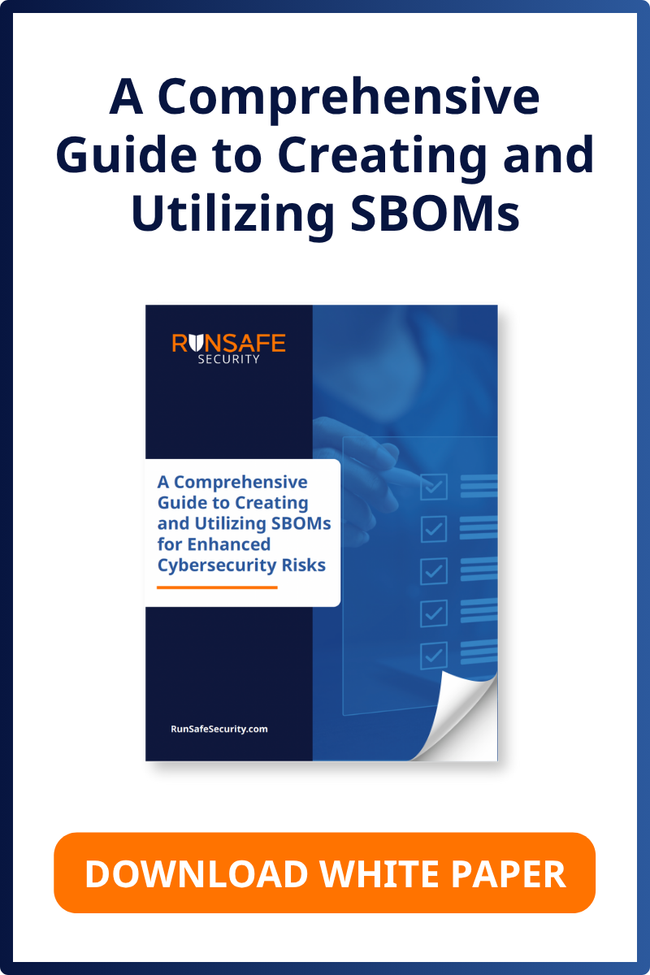If you’ve made a recent trip to San Francisco, it can feel like you’ve stepped into the future when you spot an autonomous vehicle navigating the streets, picking up passengers, and cruising the city’s famous hills. But as autonomous vehicles move from concept to reality and vehicle connectivity becomes the norm, embedded systems, the technology that makes it all possible, are an often overlooked but critical piece of automotive security.
Citing national security concerns, the Biden Administration proposed two bans in September 2024 that draw attention to the software supply chain within the automotive industry and the potential risks of autonomous and connected vehicles. Because modern cars include microphones, cameras, GPS tracking, and more, there is a very real threat that nation-state actors could exploit software to conduct surveillance, collecting data on vehicle movements, for example. Further, it’s possible that a bad actor could gain access through a software backdoor and disable an entire fleet of vehicles at one time, posing an immediate risk to drivers and disrupting society.
The bans, if approved, seek to address this, first by prohibiting new vehicle software originating within China or Russia by 2027 and second banning the imports and sales of vehicles with automated driving hardware created in the countries to go into effect by 2030.
While the implications of the bans and others like it will shake out in the years ahead, the reality for today is that we need solutions that will keep autonomous and connected vehicle software resilient and secure against known threats and those yet to come.
Why Embedded Systems Matter for Automotive Security
Embedded systems are integral to modern vehicles, processing sensor data and controlling everything from engine performance to collision avoidance. However, as vehicles become more connected and automated, embedded systems face mounting security challenges and are vulnerable to a range of threats, including unauthorized access, data breaches, and potential manipulation of vehicle controls.
“The automobile is becoming more and more of a computer on wheels and, in addition, it’s connected to a lot of different things,” explained Dave Salwen, VP of Embedded Systems at RunSafe. “While its use is great for the consumer with new features and new capabilities, it’s becoming more and more software-centric. More software vulnerabilities are coming into the system and more vulnerabilities can be exploited by bad actors.”

One of the biggest threats to embedded systems is memory-based vulnerabilities. Memory safety is a foundational aspect of software development, ensuring that programs operate reliably and securely without accessing or manipulating memory incorrectly.
Vehicle software is vulnerable to memory safety threats in four key systems:
-
- Electronic Control Units (ECUs) in Autonomous Vehicles: Responsible for critical driving functions (e.g., braking, acceleration, steering). A buffer overflow attack could lead to unauthorized access and control and erratic vehicle behavior.
- In-Vehicle Infotainment Systems (IVI): Infotainment systems need to be safeguarded from heap-based overflow vulnerabilities, which could be exploited to execute arbitrary code and gain access to other vehicle systems.
- Advanced Driver Assistance Systems (ADAS): ADAS software needs to be protected from stack-based buffer overflows that could alter sensor data or decision-making algorithms, endangering the vehicle’s safety.
- Connectivity Systems: Connectivity through 4G/5G cellular, bluetooth, wireless CarPlay/Android Auto open the door for memory corruption attacks that can lead to remote access to vehicles.
How to Secure Automotive Embedded Systems and the Software Supply Chain
The need for automotive software supply chain integrity, data security, and automotive safety standards like ISO 26262 and the emerging ISO/SAE 21434 are driving the industry to seek solutions for security and compliance. Here’s where to start.
1. Prioritize Software Bill of Materials (SBOMs) to Evaluate the Software Supply Chain
Software Bill of Materials (SBOMs) are essential tools for demonstrating regulatory compliance, tracking all components, libraries, and modules used in software applications, and enabling quick responses to security concerns. With the proposed bans from the Biden Administration on the horizon, SBOMs will be invaluable for vehicle manufacturers needing to evaluate their software supply chain to ensure they are not incorporating prohibited software. SBOMs provide detailed inventories of software components within a software binary, enabling quick compliance assessments.
2. Secure Embedded Systems from the Ground Up
Secure by Design principles are no longer optional in automotive software development. As vehicles become more complex and interconnected, retrofitting security measures after development is both costly and ineffective. Following Secure by Design principles will include threat modeling during design phases, implementing secure coding practices, conducting regular security testing, and building in mechanisms for secure updates throughout the software lifecycle.
3. Adopt Automated Vulnerability Identification and Advanced Code-Hardening Techniques
Fortifying critical systems against cyber attacks, like braking and steering in an autonomous vehicle, means protecting the millions of lines of code that allow them to function. Automated vulnerability identification and code-hardening protects software against attacks that could compromise vehicle operations and safety while reducing the attack surface.
Specifically, memory relocation techniques prevent memory-based vulnerabilities from being exploited in embedded systems. Known as load-time function randomization, the technique ensures that each instance of the software has a unique memory layout, making it extremely difficult for attackers to predict the location of specific functions, proactively neutralizing common exploit techniques like Return-Oriented Programming (ROP) and buffer overflow attacks.
The Road Ahead: Building Secure and Resilient Vehicles
The increased focus on embedded systems and the automotive software supply chain is a positive one. Ultimately, adopting stronger cybersecurity practices now is an enabler of new vehicle technology, greenlighting innovation and allowing vehicle manufacturers and suppliers to protect their products and customers from the growing landscape of cyber threats.
Learn more about techniques for using SBOM data to track and mitigate security risks in our guide to creating and utilizing SBOMs.





